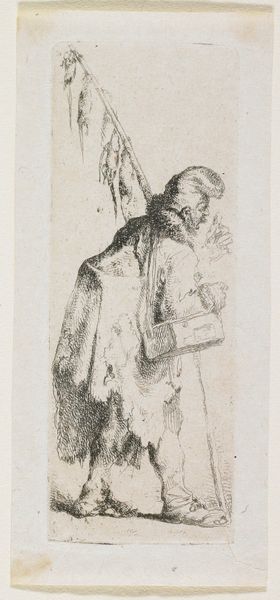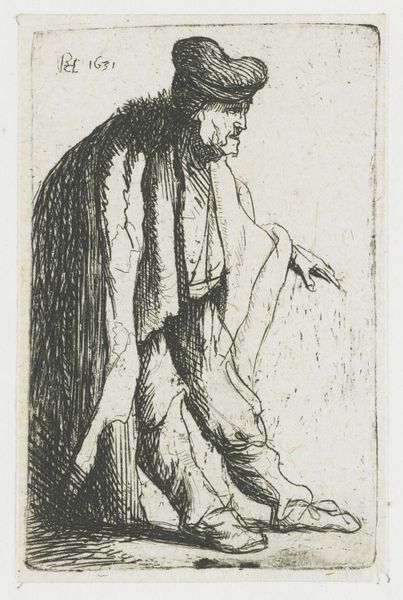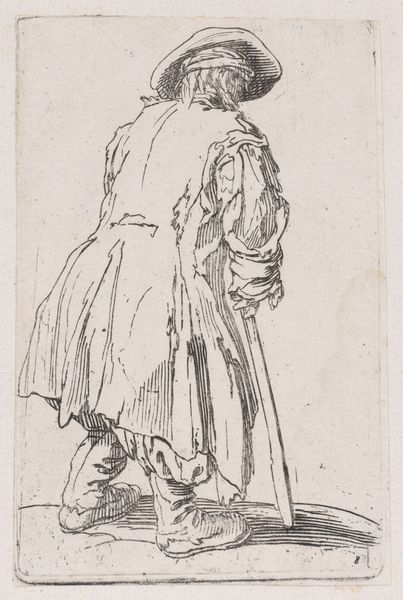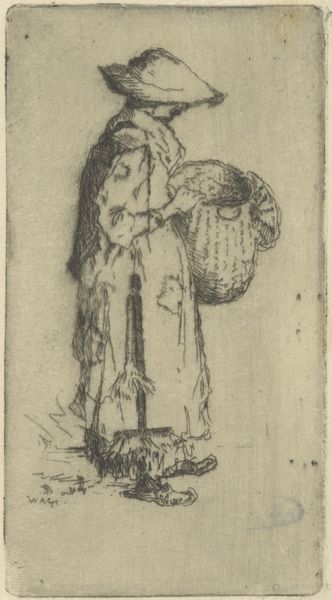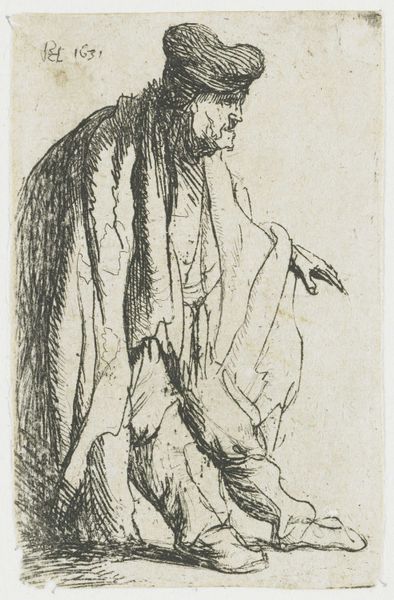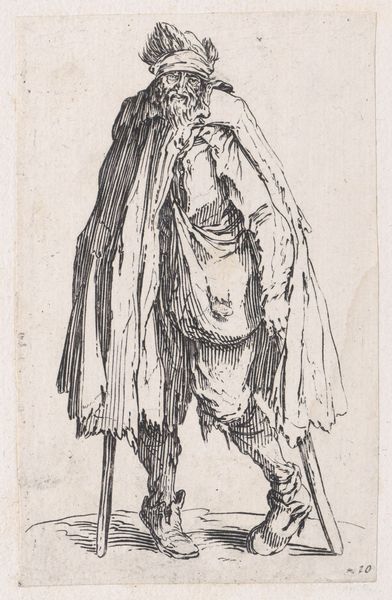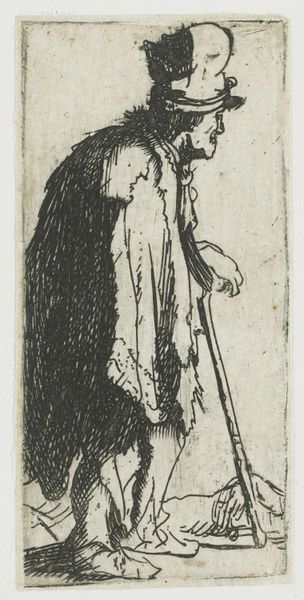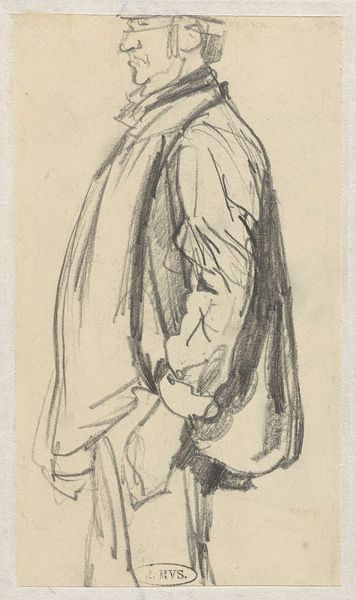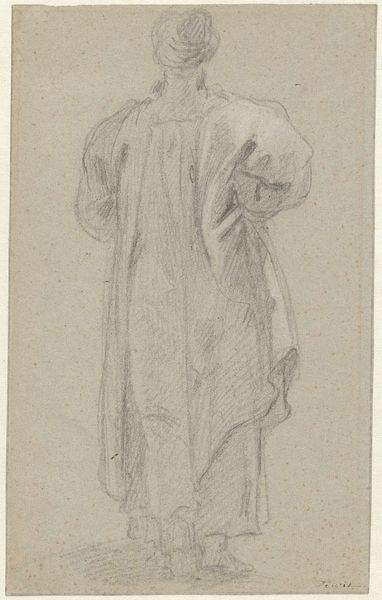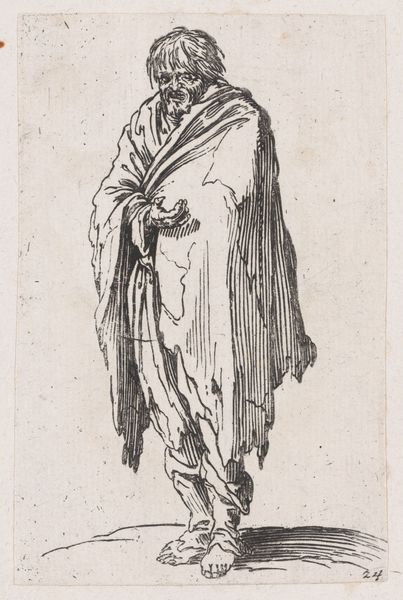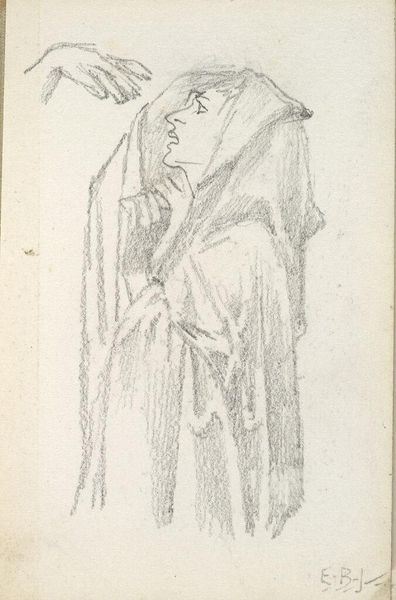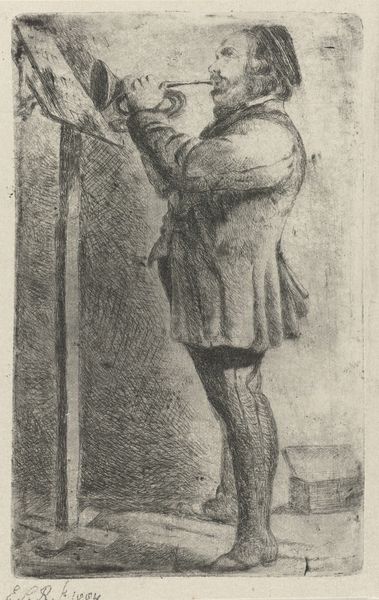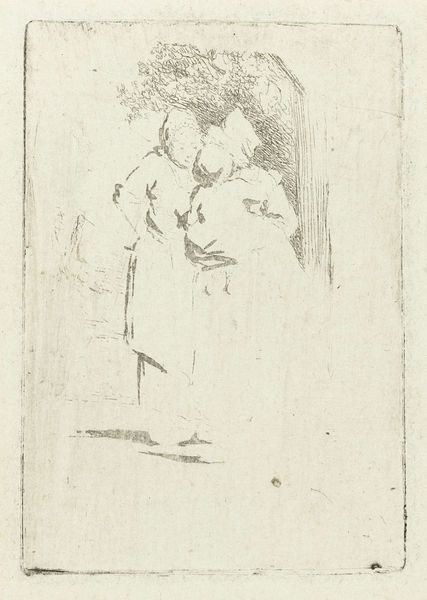
Dimensions: height 93 mm, width 35 mm
Copyright: Rijks Museum: Open Domain
Curator: Looking at this etching from around 1774 to 1789, attributed to Jean-Pierre Norblin de la Gourdaine, it appears to depict a seller of rat poison, aptly named “Verkoper van rattengif” in Dutch. Editor: It's certainly evocative. I immediately feel a sense of precarity looking at it. The man looks weary, his clothes are tattered and the print itself, rendered in such fine detail, almost vibrates with the tension of poverty. Curator: Norblin de la Gourdaine was fascinated by street life and popular culture, he spent his career portraying marginalized communities. Consider the pole over the seller's shoulder. Note how he’s using the dead rats as advertising; quite a direct appeal to those struggling with infestations. Editor: The rats are such a stark visual symbol. You know, looking at this through a contemporary lens, it really hits on issues of public health and social inequality. Whose lives are considered valuable enough to protect from pests, and who is forced into dangerous, low-paying work like this? Curator: Exactly. The etching speaks volumes about the economic disparities and public health challenges of the period. We can infer quite a bit about urban sanitation from it, too, reflecting how disease vectors shaped societal interactions. Editor: And the seller’s clothing, or lack thereof, really underlines the class divide. He’s offering a solution, but he's clearly outside the social circle who could afford cleaner dwellings in the first place. Is he helping, or simply profiting from another problem? Curator: That's a tough question. Certainly, Norblin's work frequently raises more questions than answers. One could argue his depictions expose, if not critique, some of the era’s glaring hypocrisies regarding commerce, health, and the poor. Editor: This seller, offering death to rodents. Maybe, it also implies, metaphorically, other more subtle yet equally harmful toxins circulating within that society at that period of history. Curator: A compelling read! The print allows a deeper view into historical, social realities by studying art—it goes well beyond simple observation and allows thoughtful interrogation of power relations within societies past and present. Editor: Yes, examining the 'rat poison vendor' truly unearths multiple strata: societal fragility, the fight for public well-being, and even how our visual culture represents socioeconomic rifts and those attempting to overcome these obstacles.
Comments
No comments
Be the first to comment and join the conversation on the ultimate creative platform.
